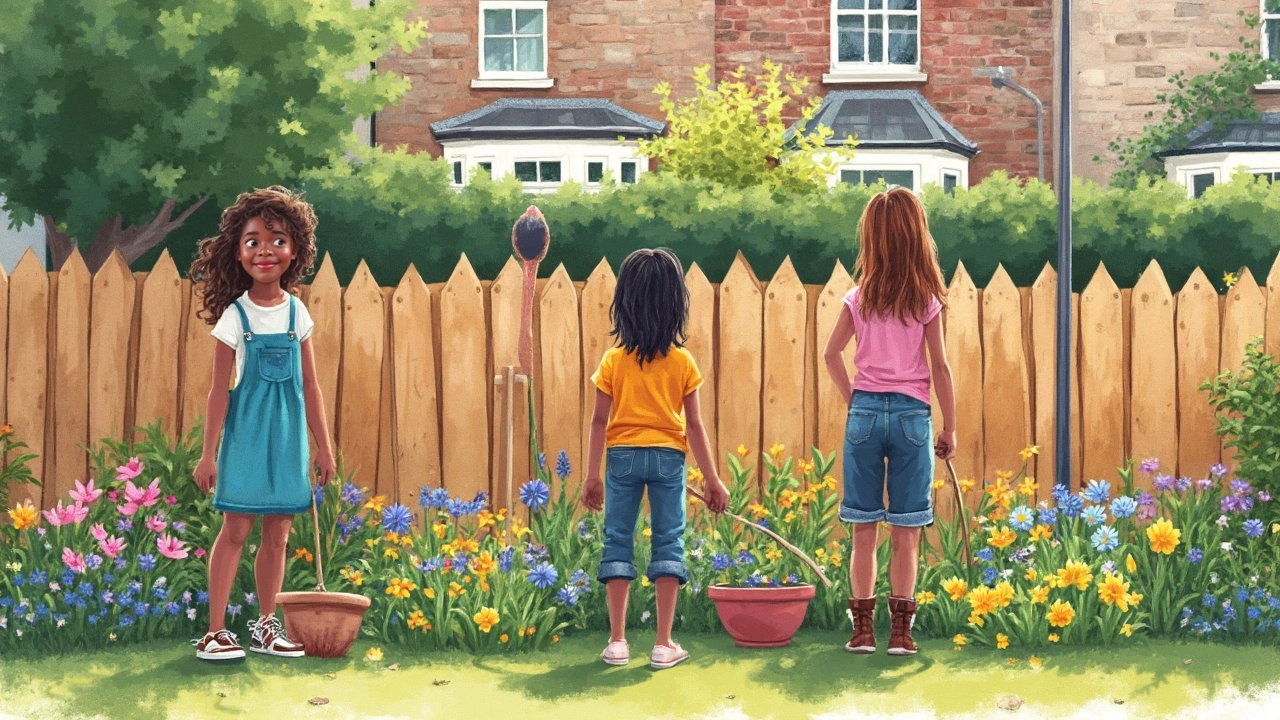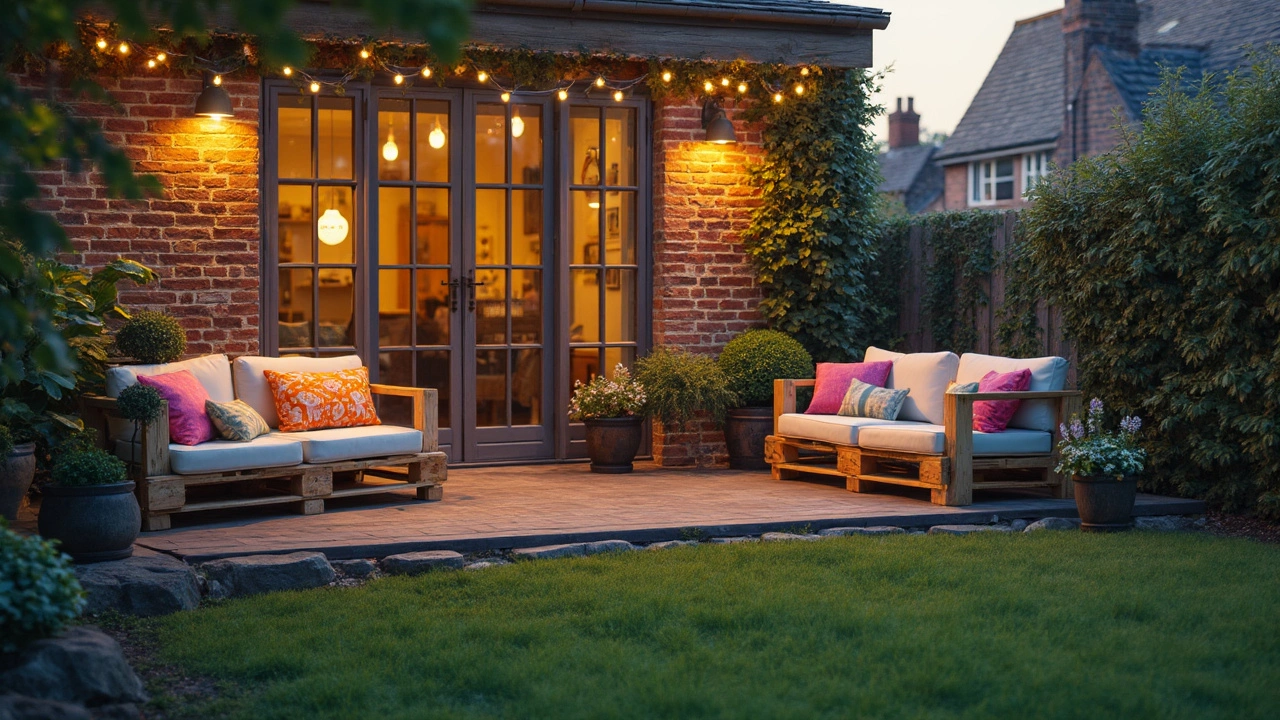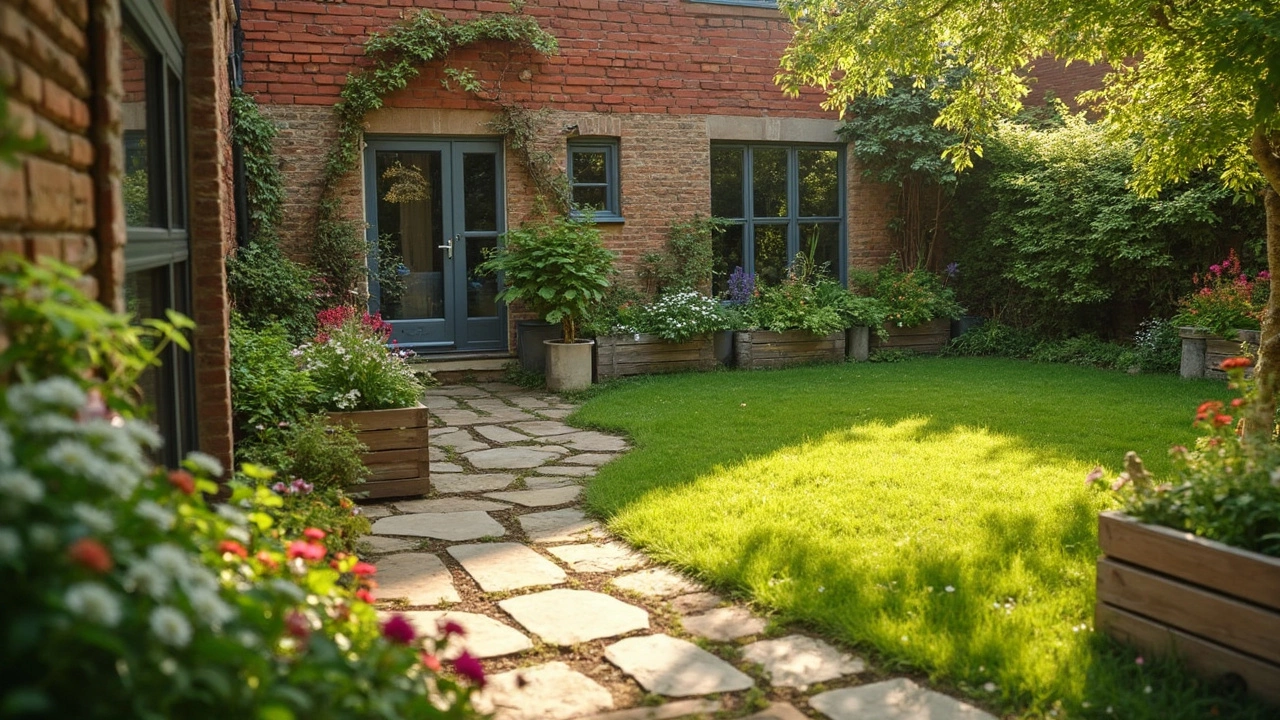Ever walk past a house and think, “Wow, how do they make their yard look that good without dropping thousands?” Most people assume a beautiful yard drains the bank account, but that’s just a myth. The wild part is, you don’t need fancy equipment or a professional landscaper. With the right hacks, even a tired patch of grass can pull off a magazine-worthy makeover for less than the price of dinner out.
Starting With What You Already Own
Everyone has some things lying around that could be put to work in the yard. Look in your garage or shed before buying anything new—chances are, you’ve got tools, planters, or even random objects that could get a second life outside. Grab buckets, old wooden crates, tires, even mugs with chipped handles—these are gold for that quirky, unique vibe that always makes a yard feel personal and interesting.
It isn’t just about saving money on planters; you can upcycle almost anything. Flip a broken wheelbarrow on its side and pile it with soil and trailing flowers. Stack old bricks to make rustic garden borders, or piece together wood scraps into a makeshift bench. Even cracked bowls can cradle succulents or herbs. The main thing? If it holds dirt and doesn’t fall apart, it can go in the yard.
Now, a real game-changer: free mulch. Most towns or cities offer free mulch or wood chips at public works or parks departments. Call around. Wood chips do wonders—less weeds, less watering, more polished look instantly. The process couldn’t be simpler: lay them around trees, flower beds, or even walkways. It will help lock in soil moisture and give your yard an intentional, ‘finished’ look you usually see in professional jobs.
If your grass is patchy or thin, don’t rush to lay expensive sod. Grab a bag of inexpensive seed that matches your grass type. Lightly rake the bare spots, toss the seed, and water daily—within weeks, those sad patches start to blend right in. While you’re at it, use grass clippings as mulch; it boosts nutrients back into the soil and keeps roots cool and moist without costing a dime.
Don’t ignore the furniture, either. You don’t have to buy brand-new pieces to create a cozy seating area. Haul out old patio chairs and revive them with spray paint. Throw some weatherproof cushions—or even roll up a couple of old blankets for a DIY approach. Want a table? Stack cinderblocks with a leftover board on top. Not pretty enough? Drape with a vibrant sheet or leftover fabric.
Your yard already has the basics. Sometimes, all it takes is a little creativity to make old things look intentional and lively. And best of all, most of these ideas won’t cost you more than a little elbow grease.

The Secret Weapons: Color, Lighting, and Easy Plants
You’d be shocked at what a fresh splash of color can do. Paint is arguably the cheapest quick fix out there. Grab a can of bright paint (the small tester cans work if you’re really squeezing pennies) and hit the fences, flower pots, or a drab mailbox. Even just matching all your planters in a single color makes everything look planned and classy.
Here’s a wild fact: a study from the University of Florida found that adding just two colors in a garden boosts curb appeal by nearly 40%. Don’t limit yourself to flowers—paint rocks, tiles, or even a few tree trunks for a playful, eye-catching twist. Scatter the color in little pockets around the yard for maximum effect.
String lights are a total game changer. You don’t even need outdoor-specific lights if you keep them undercover. Run them along a fence, dangle them from trees, or cluster jam jars with tealights on a table. Solar lights cost less than a pizza and power up by themselves—tuck them into flower beds or line a pathway, and suddenly your yard looks polished after dark, too.
Plants? You don’t need rare exotica for impact. Forget the expensive stuff; go for strong, tough varieties that grow like weeds and cost next to nothing. Hostas, daylilies, black-eyed Susans—these tear through most climates and look great. Keep an eye out for plant swaps or freebies online. Many towns have plant exchanges where gardeners give away excess seedlings. Or, better yet, ask a neighbor for cuttings. Lots of popular plants root easily in water or dirt, like spider plants, succulents, or mint.
Pile the plants together in clusters for big drama without breaking the bank. Use a mix of heights and shapes: tall grasses in the back, medium flowers in front, and low ground covers to fill space. This simple trick makes tiny gardens look lush and hides bare soil. For pure impact, pick just two or three types and repeat them throughout. It’s the oldest design trick—repetition brings a classy, expensive look even if you spent close to nothing.
Got a spot that’s just dead and barren? Cover it with quick-growing annuals straight from the dollar store packets. Marigolds and zinnias explode in color after just a month and don’t need pampering.
Another low-cost hack: swap grass for clover. Clover stays green longer, takes less water, and naturally chokes out weeds. Plus, in some places, it gets you a rebate as a drought-smart alternative.
Here’s a breakdown of low-cost yard upgrades, how much you can expect to save, and the effort involved:
| Project | Approximate Cost | DIY Difficulty | Estimated Savings |
|---|---|---|---|
| Free Mulch | $0 (pick up from local city supply) | Easy | $50–$120 |
| Grass Seed Reseeding | $10–$20 | Easy | $200 (vs new sod) |
| DIY Planters from Junk | $0 (just old items + drill) | Easy | $30–$100 |
| String Lights | $5–$20 | Easy | $50 (vs wired lighting) |
| Plant Swaps | $0 (free from neighbors or swap) | Easy | $100–$300 |
That extra color, little bit of light, and a few tough, free plants transform what people see—and how you feel being outside.

Smart Planning and Seasonal Tricks for Ongoing Savings
Before you start buying anything, walk around and actually look at your space. Sketch it out, just rough lines for where you want seating, plants, or paths. This helps you dodge mistakes and keeps you from impulse-buying a random palm tree that won’t survive the winter. Start with one small section and finish it before moving on to the next—this keeps you from getting overwhelmed and, surprisingly, saves you cash in the long run.
Pay attention to the sun. Seriously, you want shade in the heat and sun in the cold, so place benches, swings, and tables where you can actually enjoy them no matter the time of day. If your yard is blazing hot, use fast-growing shrubs or tall grasses to block some rays. Not only do these provide shade, but they let your lawn furniture and plantings last longer.
Leverage the seasons when you buy supplies or plants. Nurseries usually start discounting perennials and shrubs at the end of summer—sometimes by half or more just to clear space. Bulk soil and mulch drop in price during fall, and you can scoop up hardy bulbs (tulips, daffodils) at rock-bottom prices. Stock up now, plant, and watch the results roll in with almost zero effort next year.
If you want a bold focal point but money’s tight, create one yourself. Plant a single, eye-catching tree or tall flowering shrub in the center of a garden bed, then fill in with free or cheap ground covers. Or, build a simple firepit from leftover bricks or stones—instant hangout space, no store-bought kit required. Stack stones in a wide circle, dig down a few inches so the base sits steady, and you’re set. Bonus: it keeps the mosquitoes away, and nobody can say no to s’mores.
Keep water needs in mind. Rain barrels aren’t just for eco-warriors; they pay off hard in the summer. Even homemade barrels—a trash can with a spigot—will fill up fast and give you free water for the garden. Focus your thirstier plants near natural water collection spots, like near gutters or shaded corners. Less hose, less water bill, less hassle.
Weekends can be your secret weapon, too. Instead of spending hours every Saturday mowing, edge your lawn well every other week, then set aside one afternoon to tidy up edges, prune overgrown shrubs, and sweep away stray mulch. It makes the entire yard look cared-for in a fraction of the time. Neat edges trick the eye into thinking the whole space is more upscale, even when you never buy a single new plant.
For folks with kids, turn yardwork into a game. Give everyone a bucket—whoever finds the most weeds, sticks, or pinecones gets a treat. Not only is it free labor, but you’ll get stuff done faster and teach a little pride in the process.
If you get stuck, look up local gardening clubs or Facebook groups. Gardeners love to talk shop and often have piles of seedlings, cuttings, or seeds they’re thrilled to share. The knowledge from local folks is unmatched—you’ll get the real scoop on what thrives in your zone for almost no cost. Best of all, you’ll never feel alone, no matter how wild your yard projects get.
Taking a few smart steps means you’ll always have a fresh-looking, envy-worthy yard—without ever splurging on it. Small, cheap changes add up fast, and before long, nobody will believe you pulled it off on a shoestring. The secret’s out now. Ready to roll up your sleeves?
